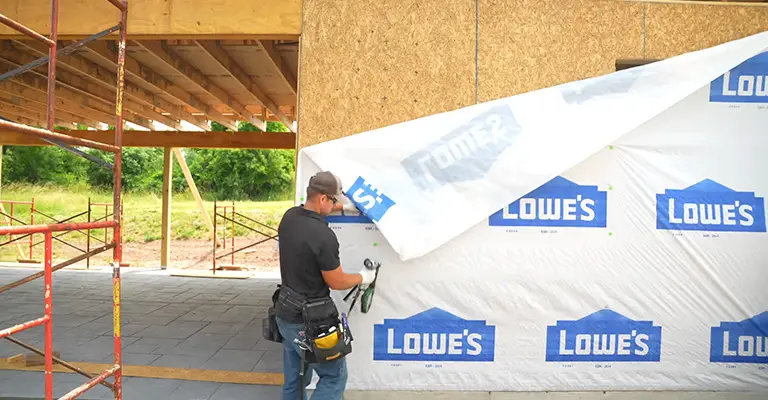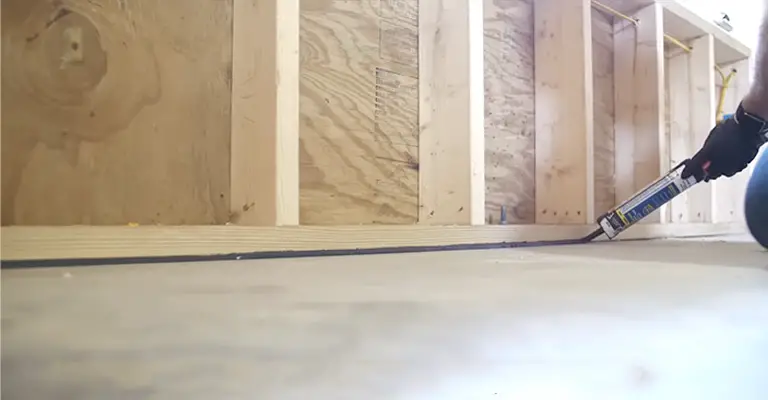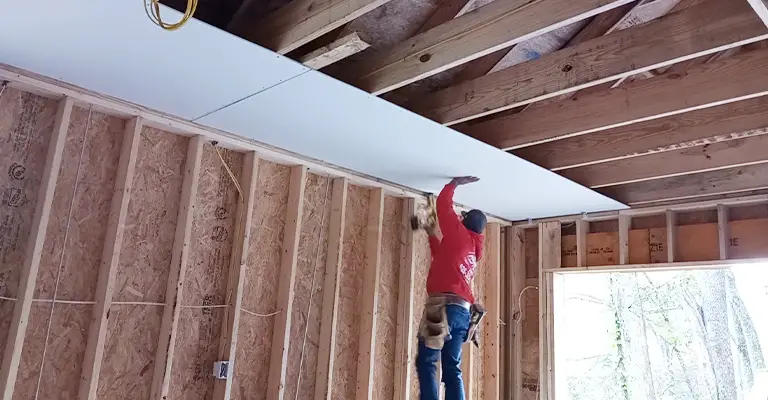Storing drywall in a garage is a practical consideration for many homeowners and contractors, especially when space inside a home or construction site is limited.
Drywall, a crucial component in the world of construction and remodeling, is known for its versatility and affordability.
However, its susceptibility to moisture and environmental factors raises questions about whether a garage is a suitable storage location.
Even if you do not have heat or air conditioning, the inside of a garage or a shed is a much more secure place than the outside.
If your garage or shed floor is flat and spacious enough, you can safely store Sheetrock there as long as moisture isn’t a factor.
The perfect place might be your giant garage, where you can park your car and stack drywall horizontally.
Are Drywalls Safe in a Garage?
Generally, storing drywall in a garage is safe as long as certain precautions are taken. Unlike other building materials, drywall is relatively stable and unlikely to cause serious safety hazards.
The garage is, however, an area with some potential hazards associated with the storage of drywall.
Storage of drywall in a garage comes with its own set of problems. One of the biggest is moisture. Drywall in garages can often absorb moisture, causing it to crack and cause damage.
A wet drywall surface can cause mold growth, warping, and other structural problems.
It is imperative to keep drywall off the floor in your garage and in a dry area, preferably on shelves.
The possibility of fire also poses a potential safety risk. In the presence of a heat source or other flammable material, drywall can catch fire and pose a severe safety hazard.
The risk of a fire can be significantly reduced by storing drywall away from potential heat sources, such as water heaters, furnaces, or heaters.
Additionally, it is vital to consider the drywall’s weight. Unsafely storing drywall sheets is a safety concern because they can be heavy and difficult to move.
To prevent drywall sheets from falling and injuring you, drywall sheets should be stacked properly and securely in the garage.
Can Drywall Be Stored Outside?

When drywall is left outside unprotected, it should not be stored outside. Keeping drywall dry outdoors in the rain, snow, and/or humidity will quickly ruin it since moisture damages it.
It can, however, be done if you keep it raised off the ground, evenly supported, and vacuum-sealed from the elements.
There is sometimes vacuum-sealed plastic material used to store drywall outside. It typically occurs on construction sites, where it may take a few days for anyone to get to it.
If you don’t have an industrial method for vacuum sealing drywall, you should keep it indoors at all costs.
If you’re in a real jam, using plastic sheeting and a shop vacuum to vacuum seal might buy you some time, but it’s not always effective.
Before stacking your first sheet open, place some scrap 2x4s, pallets, or other supports on the ground and cover them with a tarp or sheet of plastic.
Stack all the sheets and wrap them by wrapping the tarp or more plastic sheeting around the stack.
An excellent way to seal tarps or plastic is to seal all edges; if possible, vacuum sealing them will also be helpful. It is unlikely that the outside moisture will be able to get to it if it is not well sealed, but it will eventually cause damage.
In our experience, wood is much more weather-proof than drywall (though it still warps), and we have tried it before without any problems.
What’s The Best Way To Store Drywall You Don’t Intend To Use Right Away?

Keeping drywall flat and indoors, where the entire surface is sealed away from the elements, is the best storage method.
You should keep your drywall in an environmentally controlled area, as moisture will lead to it losing its structural integrity and making it tender and swollen, which causes mold spores easier to grow.
It destroys the drywall when this happens. Keep your drywall off the ground and flat in your garage by leaning it against a wall or upright against the wall.
This is done by laying drywall blocks on the floor, covering them with plastic, and then stacking the drywall on top. (If you have drywall delivered to you, have the truck driver give you free drywall blocks.)
Stack the drywall in a pile and place a tarp or plastic sheet on top to protect it from moisture.
If you do not want your Sheetrock to be horizontal, you can store it vertically. Though there is a higher risk of sagging and potentially tipping with this, it comes with more benefits.
If you are okay with taking on the risk, follow these steps:
- The first step in this process is to lay a piece of plywood by a wall on the floor.
- Immediately follow that by placing another piece of plywood, this time vertically, against the wall.
- To keep the vertical piece securely in place, it must lean slightly. In this step, you will place your drywall against the leaning plywood.
- Put a tarp on it if moisture is an issue.
How Long Can You Store Drywall?
Keeping the drywall in a controlled environment and making it airtight can last for years. If it’s stacked properly and sealed from the elements, the Sheetrock will have a life expectancy of virtually indefinite!
Whenever you store something for long period, you need to keep it off the ground so that moisture cannot get to it (notice a theme). To help protect it from airborne moisture, you should also drape a plastic tarp over the area.
The life expectancy of drywall is usually several months or even years if properly stored.
Store drywall in a calm, dry environment with around 50% relative humidity and a temperature range of 50-70°F.
Drywall can absorb moisture in damp and humid environments, resulting in warping, mold growth, and other problems.
Additionally, drywall should be stored flat, not on its edge, as it may bend or bow if stored on its edge.
The drywall should be stacked on a flat surface that would support it evenly to prevent it from getting damaged.
How to Store Drywall Standing Up to Reduce Risk of Harm and Damage

Store your drywall standing up and protect it from moisture risks by covering the bottom edge.
You should also make sure to lean your first piece against the wall by about four or five inches. To prevent drywall sheets from tipping, they should not be stored against walls less than four inches apart.
If a sheet leans with a gap of more than six inches, it can be caused to bend or crack by significant lateral pressure. When stored on its edge, lightweight drywall is likelier to break than regular drywall.
This may be important to consider when deciding between lightweight and regular drywall. On the other hand, avoid storing drywall on its side next to each other.
The most common cause of tipping is when one sheet is pulled out from behind the others in the stack. In addition to serious injury (drywall is heavy!) or breaking, tipping can also cause severe property damage.
Can Drywall Be Stored Standing Up?
If you plan to leave drywall vertically for a few days or weeks, you can stack it vertically, but for long-term storage, you should stack it flat.
A simple solution is to store drywall on its side so it will take up less space, but it will also make it vulnerable to damage and create a safety hazard for workers.
Almost every time you see drywall leaned vertically (beveled edge up/down) on a construction site.
It is important to remember that the schedule of a typical builder home today is very tight, so drywall cannot hang around for long, often being brought in by the drywall installers themselves.
Can You Store Drywall In An Unheated Garage?
You shouldn’t store drywall in an unheated garage for long periods. A garage without climate control can develop moisture because it lacks protection from the elements. The moisture can grow mold spores or even rot Sheetrock if it penetrates the wall.
Final Words
Consider when you will require your drywall boards in your building schedule; then, plan where to efficiently store them and prepare that area to the best of your ability before buying them.
It is possible to make the drywall last for several years when environmental controls are in the storage area.
Store it indoors and stack it horizontally and off the ground. Do not let it touch the ground. Finally, try vacuum sealing it if you can.
Yes, vacuum sealing your drywall in some industrial-strength plastic is a bit of a pain at first, but it’s the perfect long-term storage option. If you decide to pull it out again, it will look exactly as it did when you bought it.








